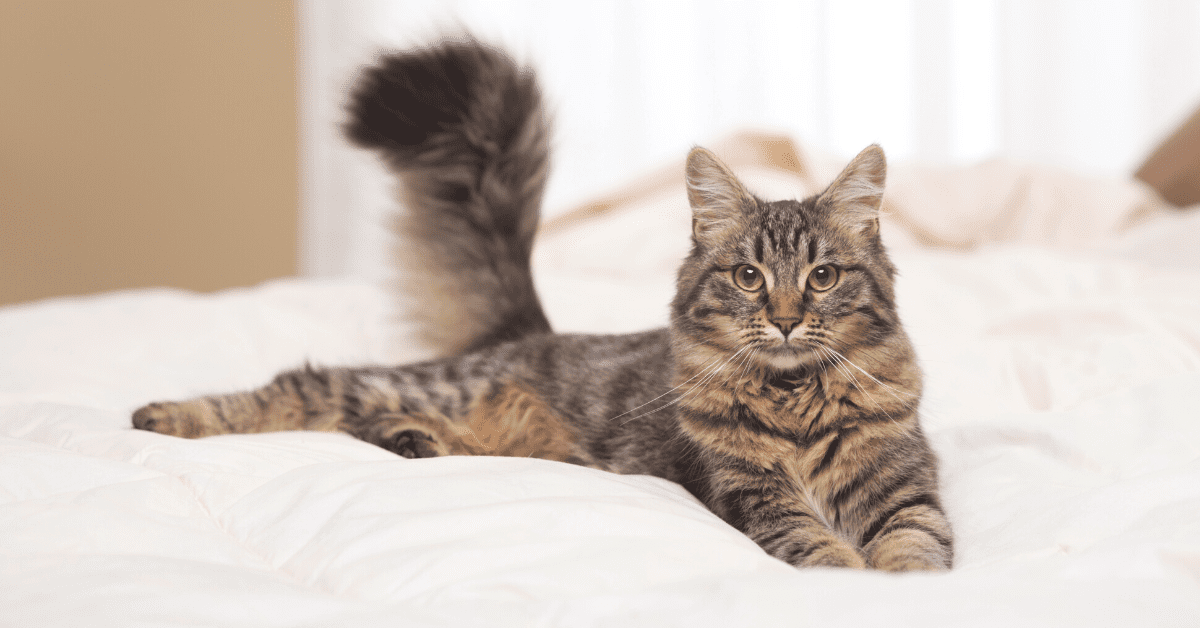
9 Reasons Your Cat is Shedding Like Crazy and When to Worry
Cat shedding is a normal part of most cat parents’ lives. However, sometimes the flying fur goes too far. Should you be concerned?
Here are answers to your top cat shedding questions as well as nine reasons why your ball of fluff is suddenly fluffier than usual.
Do All Cats Shed?
The short answer is yes. All cats shed, but some cats shed a lot less than others.
If you’re concerned about allergies, it’s important to know that it isn’t a cat’s hair that triggers allergies. It’s proteins in their saliva.
All cats groom themselves, which transfers their saliva onto their fur and skin. When that cat loses hair or sheds skin cells, those proteins are spread. Cats also are known for licking and “grooming” their favorite people, which spreads those proteins too.
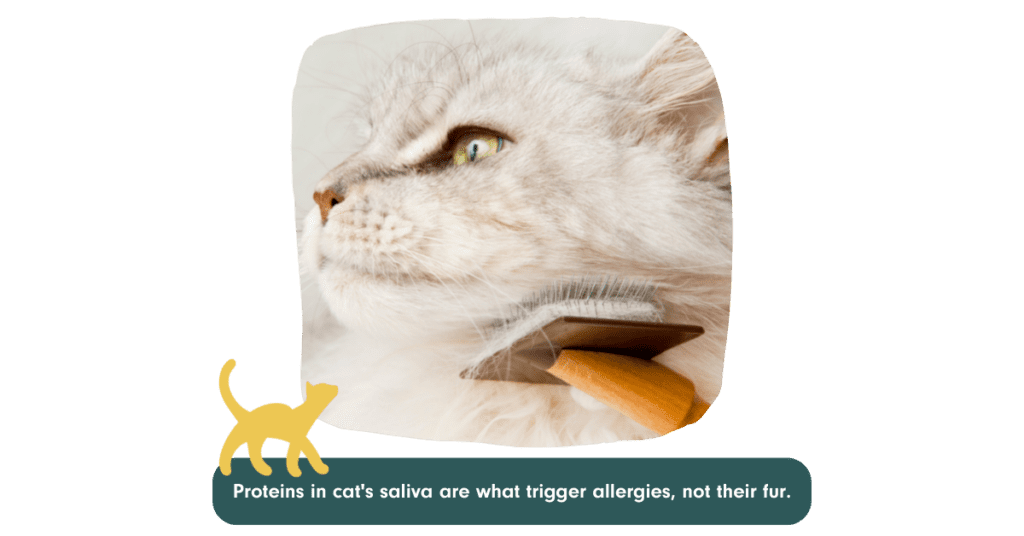
That means even a low-shedding cat may trigger an allergic reaction in a very sensitive person.
Because of cats’ ability to sneak into any space, it can make it hard to find all the fluff. My biggest struggle with cat shedding has been in the closet — Olivia used to sleep in the closet under where I hung my sweaters. As a result, I’d have massive amounts of cat hair on the arms of my sweaters. I wouldn’t realize this until I wanted to wear it!
When we moved, I discovered that my futon in the guest bedroom was FULL of cat hair on the backside. This is because it was Turtle’s favorite place to hide and sleep.
Also, cat hair is so fine that it’s harder to clean up than dog hair. This adds even more challenges for people with allergies.
Pin Me!
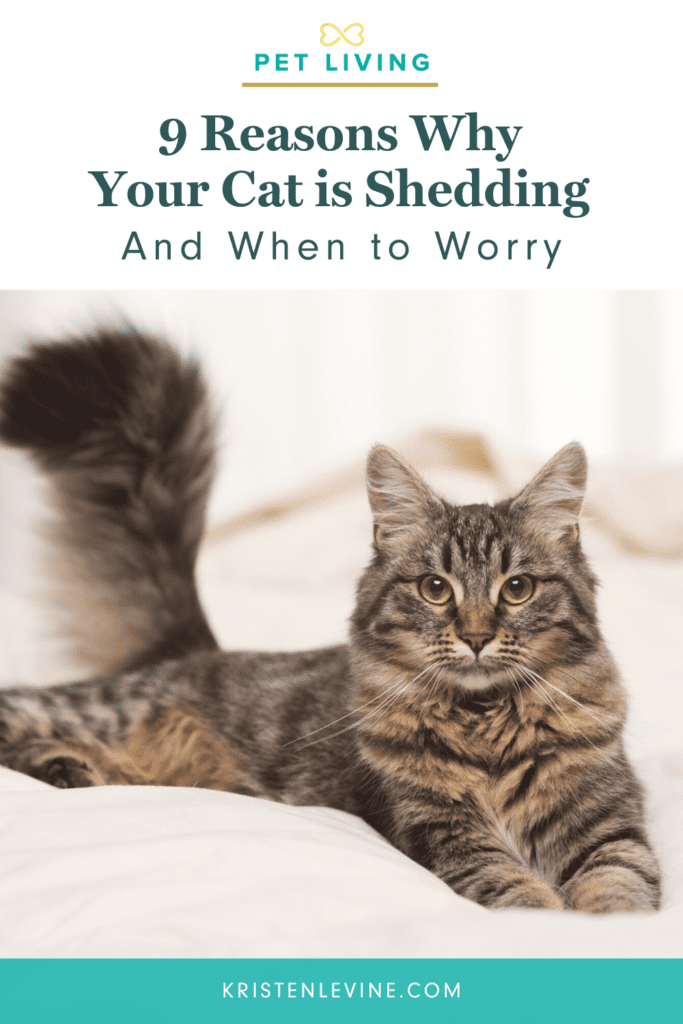
Cats That Don’t Shed
As mentioned above, there really isn’t a cat that doesn’t shed at all. However, there are definitely breeds that shed less.
Your “hairless” cat breeds like the Sphynx obviously have very little hair to shed, but even they shed a little. It just will be less noticeable since what hair they do have is more like peach fuzz.
Other cat breeds that shed less than “normal” cats include the curly-haired Cornish Rex and Devon Rex cats and the short-haired Burmese and Siamese. There’s even a long-haired low-shedding cat breed: the Birman.
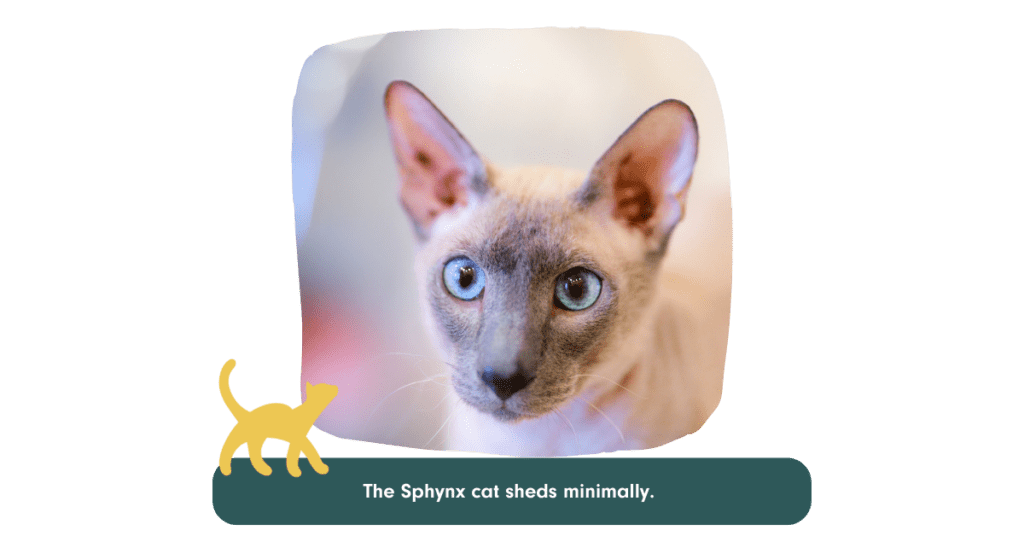
Should I Be Worried if My Cat Is Shedding a Lot?
Some cats naturally shed more than others. There are also times of the year when cats shed more, like spring and fall. In those cases, it’s perfectly natural and nothing to worry about.
However, if you notice your cat shedding far more than normal or even developing bare patches in their fur, it’s time to look a little deeper for possible reasons.
Fortunately, most causes of cat shedding are treatable. Here are nine reasons why your cat is shedding so much – and what you can do to help.
9 Reasons Why Your Cat Is Shedding So Much
It’s that Time of Year
As mentioned above, cats shed more in the spring and fall. This is especially true if your cat goes outside.
In the spring, they’re getting rid of the thicker fur they grew to keep them warm in winter. In the fall, they’re clearing out the lighter summer coat to make way for the thicker winter coat.
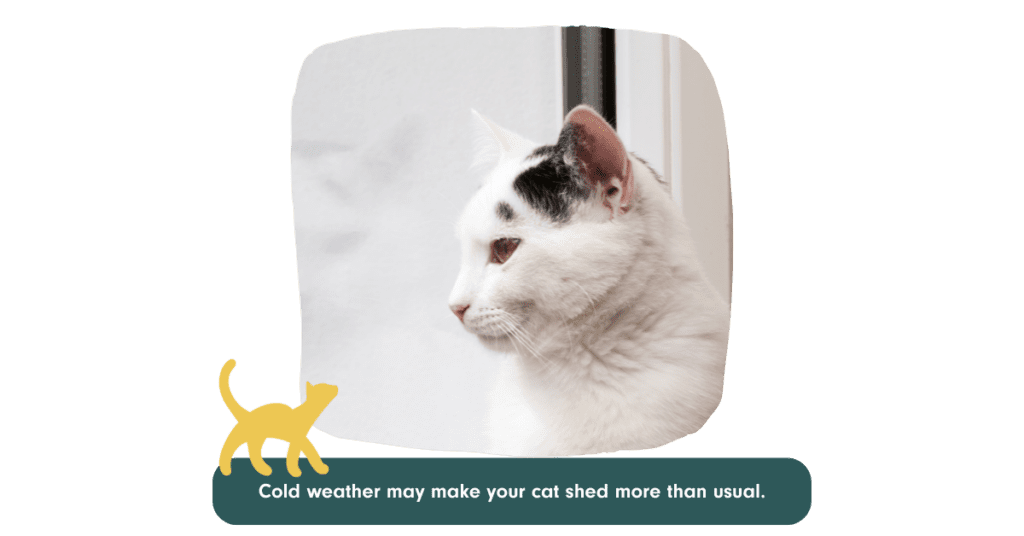
Your Cat Is Stressed
Stress comes in many forms, and a stressed kitty is often a shedding kitty.
Stress can be short-term, like a trip to a vet or their pet parents leaving for a weekend getaway. Perhaps you’ve taken your cat to the vet and noticed a veritable cloud of fluff emerge from their cat carrier. That’s due to short-term stress.
Long-term stress causes shedding too. This includes things like moving to a new house or additions being made to the family (both human and animal).
If you also notice your cat becoming more withdrawn, meowing excessively, scratching the furniture, or even having litter box problems, stress may be the root cause of all their symptoms.
Fortunately, there are many ways you can help your stressed-out cat, like providing toys and distractions and giving them safe places in the house to call their own. Anxiety supplements, like Zylkene, may also be an option.
Your Cat Is Getting Older
Some senior cats groom themselves less than younger cats, which leads to more shedding. If you notice your senior cat grooming a little less (and shedding more), you can help them by adding more brushing and grooming to your daily kitty routine.
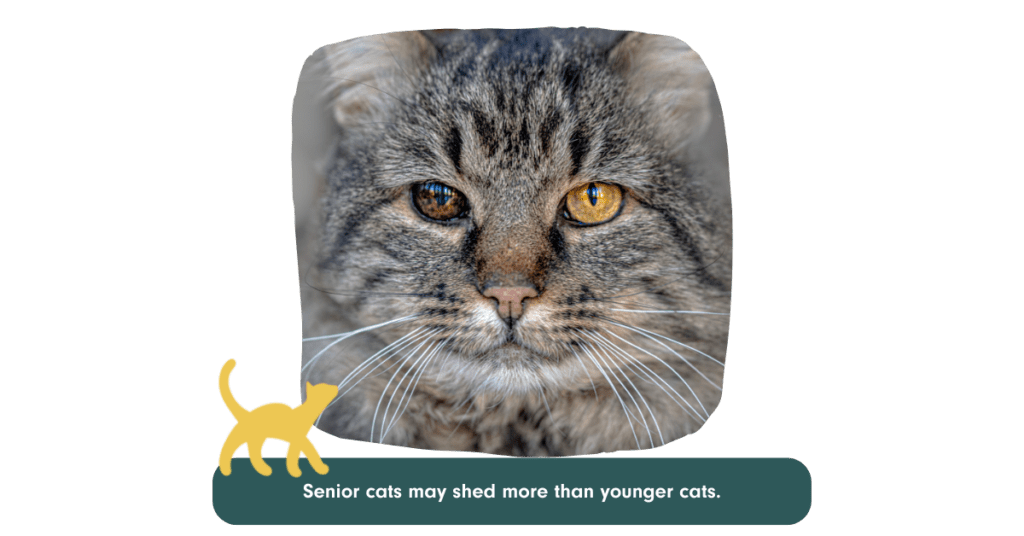
Your Cat Is Pregnant
Pregnant cats have a lot more hormones at play which can increase their shedding. You may especially notice a lot of shedding on their stomach since their body is getting ready to nurse their new kittens.
Your Cat Has Parasites
No one likes to think about fleas, mites, and other pests hitching a ride on their furry friends, but it happens. Especially if your cat is allowed outside, unwanted pests can find their way onto them.
When these parasites bite your cat, they cause irritation and itchiness. Some cats are also allergic to flea bites, which makes the reaction worse. Your cat’s natural response – to scratch and bite – can lead to dermatitis and hair loss.
To stop the excess shedding and relieve your cat’s irritated and itchy skin, take proactive steps to eliminate parasites from your home and prevent them from making a return appearance.
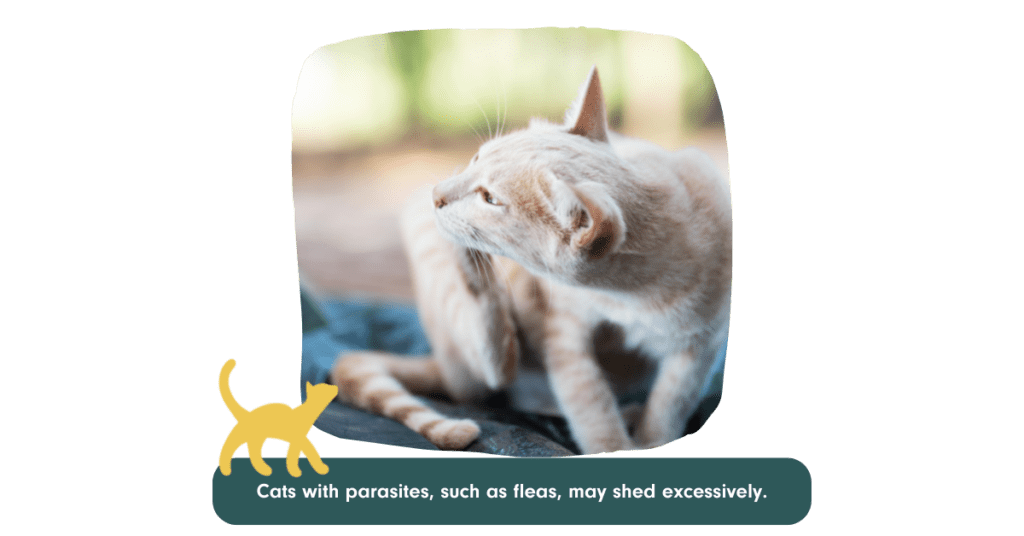
Your Cat Has Allergies
If you notice your cat scratching and shedding a lot – especially if they’re getting bald spots – an allergy may be to blame.
Cats can be allergic to many of the same things humans are, including dust, pollen, and certain foods. While it can be difficult to determine what exactly your cat is allergic to, your veterinarian can help figure out what’s causing it and help you find the right treatment.
Your Cat Has a Fungal Infection
Fungal infections, like ringworm, can cause hair loss in patches. It’s not painful, but it is contagious. It can spread to other animals in the house as well as their human parents.
If ringworm is your shedding culprit, your veterinarian can prescribe creams and shampoos to treat it.
Your Cat Has a Nutritional Deficiency
If you notice your cat shedding more along with a dull coat, they may have a nutritional deficiency. Giving your cat a well-balanced diet made only for cats is key.
As your pet gets older, their nutritional needs change. Make sure your cat is getting the purr-fect food for their age and circumstances.
If you’re unsure what food would best suit your kitty, ask your veterinarian to point you in the right direction and get your cat back to their shiny-coated self.

Your Cat Has a Thyroid or Kidney Issue
In rarer cases, an underlying metabolic disease can cause shedding. This includes kidney disease and hyperthyroidism.
Just because your cat starts shedding doesn’t mean they have one of these more serious conditions. As listed above, there are many other causes of cat shedding that are more likely culprits.
However, if you notice additional symptoms such as increased drinking and urination or a matted and greasy coat, you should talk to your veterinarian. When caught early, these diseases can be managed.
The Tail End
Dealing with cat shedding is a natural part of a cat parent’s life – but sometimes it’s a little more than we expect. Fortunately, most causes of excess shedding are easily treated and managed. By finding the cause of our cat’s excessive shedding, we can improve their lives and ours.
Would you like to learn more about your cat’s habits and ways and how to bond with them? Then download my FREE ebook on bonding with your cat!



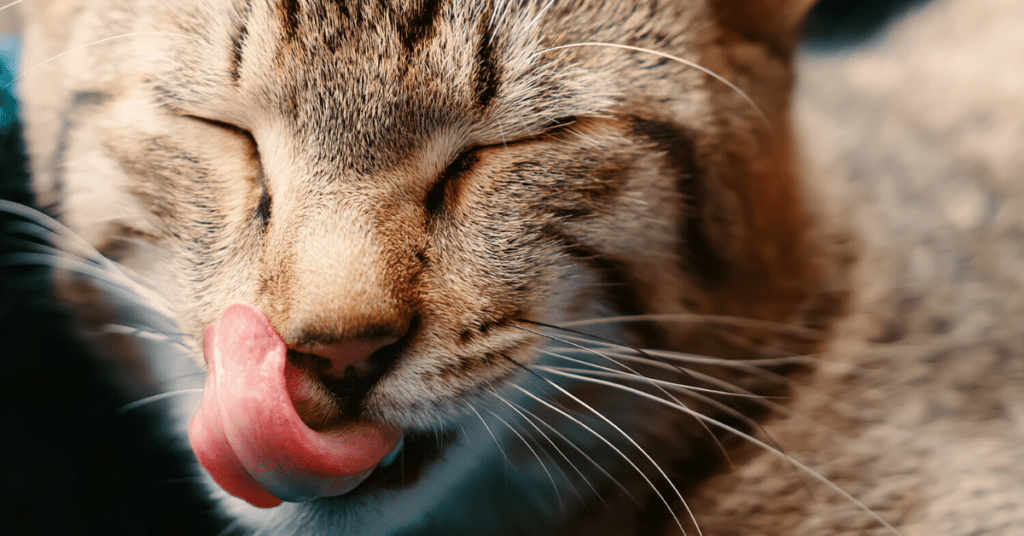
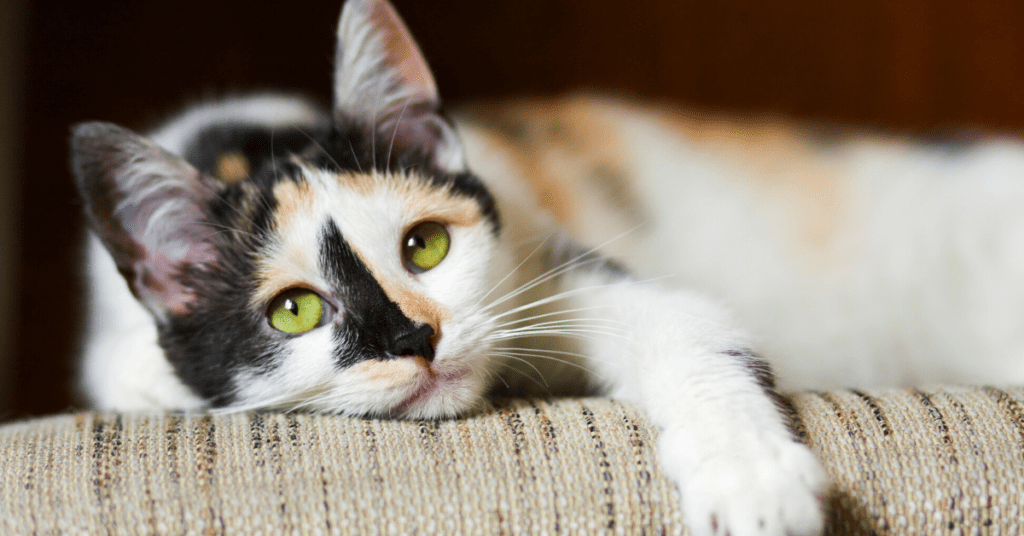

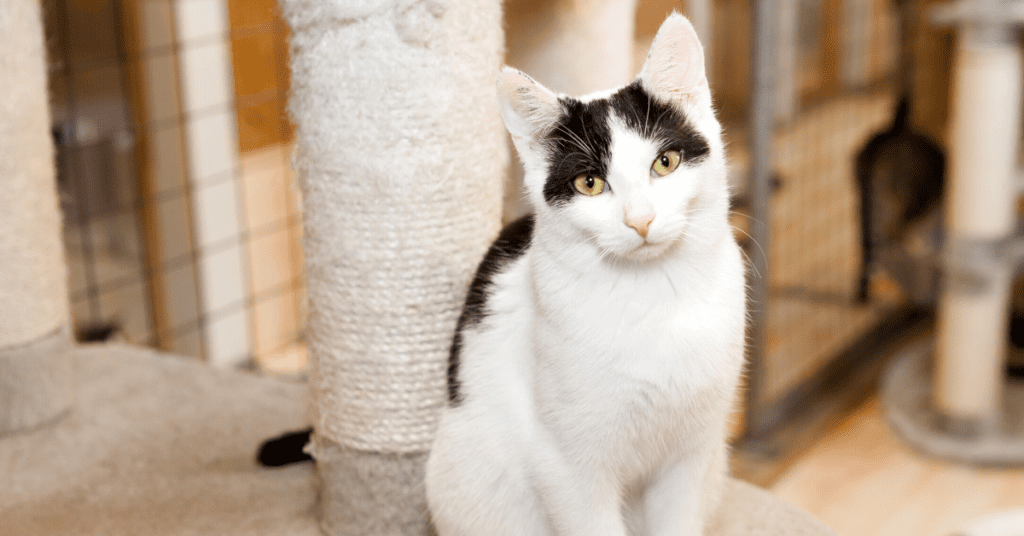
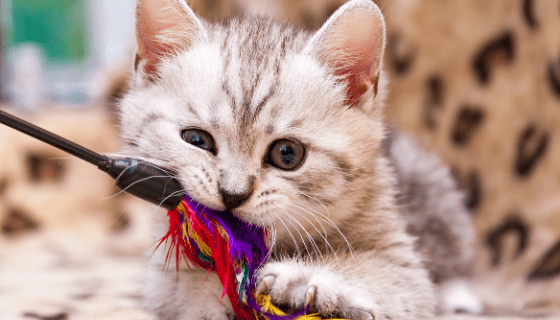
This Post Has 0 Comments